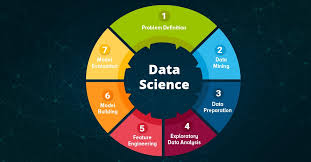The Importance of Exploratory Data Analysis
Exploratory Data Analysis (EDA) is a crucial step in the data analysis process that involves examining and visualising data to uncover insights, patterns, and trends. It plays a vital role in understanding the characteristics of the data and informing further analysis.
Key Benefits of EDA
- Identifying Patterns: EDA helps in identifying patterns and relationships within the data that can lead to valuable insights.
- Detecting Outliers: By exploring the data visually, outliers or anomalies can be detected, which may impact the analysis results.
- Understanding Data Distribution: EDA provides a clear understanding of how data is distributed, which is essential for selecting appropriate analytical techniques.
- Feature Selection: EDA helps in identifying relevant features or variables that are important for predictive modelling or analysis.
- Data Cleaning: Through EDA, missing values or errors in the data can be identified and corrected before further analysis.
Tools for Exploratory Data Analysis
There are various tools and techniques available for conducting exploratory data analysis. Some common methods include:
- Histograms: Visual representations of data distribution.
- Scatter Plots: Used to show relationships between variables.
- Box Plots: Displaying summary statistics such as median, quartiles, and outliers.
- Cross-Tabulations: Examining relationships between categorical variables.
- Covariance and Correlation Matrices: Assessing relationships between numerical variables.
In Conclusion
Exploratory Data Analysis is an essential step in any data analysis project. By exploring and understanding the characteristics of the data, analysts can make informed decisions about subsequent analyses and derive meaningful insights from their datasets. Embracing EDA can lead to more accurate results, improved decision-making, and a deeper understanding of complex datasets.
Understanding Exploratory Data Analysis: Importance, Benefits, Tools, and Its Role in Identifying Patterns and Trends
- What is Exploratory Data Analysis (EDA) and why is it important?
- What are the key benefits of conducting Exploratory Data Analysis?
- What tools and techniques are commonly used in Exploratory Data Analysis?
- How does Exploratory Data Analysis help in identifying patterns and trends in data?
- What role does Exploratory Data Analysis play in the data analysis process?
What is Exploratory Data Analysis (EDA) and why is it important?
Exploratory Data Analysis (EDA) is a crucial process in data analysis that involves examining and visualising data to uncover patterns, trends, and insights. It is important because it helps analysts gain a deeper understanding of the data, identify outliers or anomalies, detect relationships between variables, and make informed decisions about further analysis. EDA plays a key role in data cleaning, feature selection, and overall data preparation for more advanced analytical techniques. By exploring the data through EDA, analysts can ensure the reliability and quality of their analysis results, leading to more accurate interpretations and valuable insights from the dataset.
What are the key benefits of conducting Exploratory Data Analysis?
Conducting Exploratory Data Analysis (EDA) offers a range of key benefits that are essential for understanding and interpreting datasets effectively. By engaging in EDA, analysts can identify patterns, relationships, and outliers within the data, leading to valuable insights that may not be immediately apparent. EDA also aids in detecting anomalies, understanding data distribution, selecting relevant features for analysis, and ensuring data cleanliness by addressing missing values or errors. Ultimately, the comprehensive exploration facilitated by EDA enhances decision-making processes, improves the accuracy of analytical results, and fosters a deeper understanding of complex datasets.
What tools and techniques are commonly used in Exploratory Data Analysis?
In Exploratory Data Analysis (EDA), various tools and techniques are commonly employed to uncover insights and patterns within datasets. Some of the most frequently used tools include histograms for visualising data distribution, scatter plots for displaying relationships between variables, box plots for summarising statistics such as median and outliers, cross-tabulations for examining relationships between categorical variables, and covariance and correlation matrices for assessing relationships between numerical variables. These tools play a crucial role in helping analysts explore the characteristics of the data and make informed decisions about subsequent analyses.
How does Exploratory Data Analysis help in identifying patterns and trends in data?
Exploratory Data Analysis (EDA) plays a crucial role in identifying patterns and trends within data by providing analysts with valuable insights through visualisation and examination. By utilising various EDA techniques such as histograms, scatter plots, and box plots, analysts can visually explore the data distribution, relationships between variables, and detect outliers or anomalies that may indicate underlying patterns. EDA also helps in understanding the data structure and uncovering hidden trends that may not be apparent initially. Through EDA, analysts can gain a deeper understanding of the data, which is essential for making informed decisions and further analysis to extract meaningful patterns and trends from the dataset.
What role does Exploratory Data Analysis play in the data analysis process?
Exploratory Data Analysis (EDA) plays a fundamental role in the data analysis process by serving as a crucial initial step in understanding and interpreting the dataset at hand. It enables data analysts to uncover patterns, relationships, and anomalies within the data, providing valuable insights that guide further analysis. EDA helps in identifying key features, detecting outliers, understanding data distributions, and cleaning the data to ensure its quality. By delving into the data through EDA techniques such as visualisations and statistical summaries, analysts can make informed decisions on how best to proceed with more advanced analyses, ultimately leading to more accurate results and meaningful interpretations.

No Responses